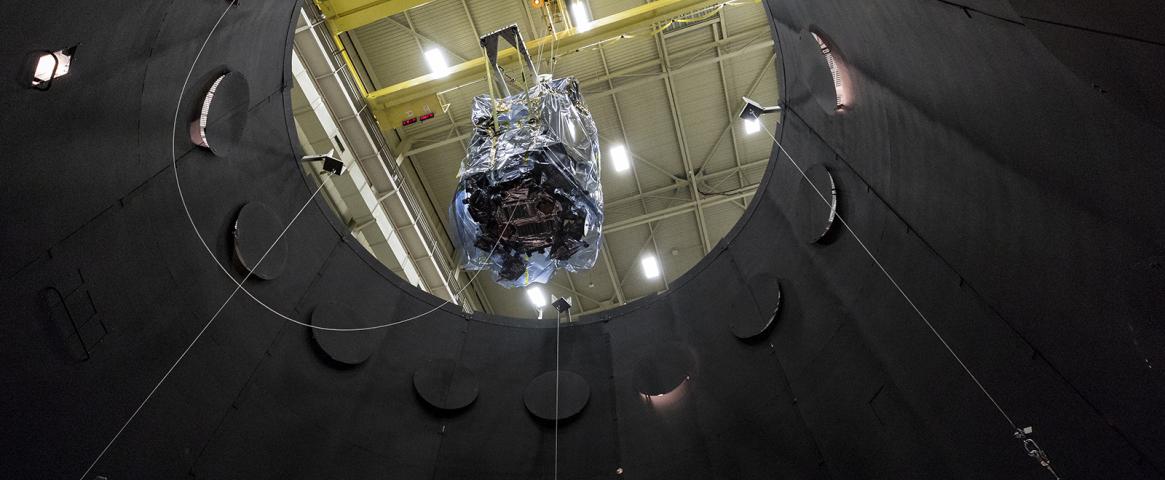By Emily Shepherd. Mentored and edited by Lesley Evans Ogden.
Geomagnetic storms that disrupt the Earth’s magnetic field can seriously disrupt infrastructures like electricity grids and telecommunications. That’s something the Parker Solar Probe, launched toward the sun in August 2018, hopes to mitigate by sending back data enabling scientists to better predict the occurrence of geomagnetic storms.
The probe is investigating multiple mysteries of the sun, including coronal mass ejections (CMEs), better known as solar flares. CMEs are when the sun releases huge bursts of energized plasma and associated magnetism into space. These events can cause geomagnetic storms on Earth, wreaking havoc on industrial electrical systems.
“The electrical power system is primarily designed to work with very tightly controlled and tightly balanced AC currents in their lines,” said geophysicist Jennifer Gannon of Computational Physics, Inc., a participant in the February 19th virtual panel about space weather at the annual meeting of the American Association for the Advancement of Science (AAAS). “When you add a quasi-DC current [from a geomagnetic storm] on top of that, it can really mess up the system and cause hazardous conditions,” she said.
Scientists have had little advanced warning about CMEs approaching the Earth to date. In 1859, the most powerful geomagnetic storm in history, known as the Carrington Event, pushed the polar auroras nearly to the equator. The resulting disturbance to electrical systems caused mayhem worldwide. Telegraph stations lost power and, in some cases, caught fire.
If a Carrington-sized geomagnetic event happened today, the effects could be dire. Such events are humongous. If one hit the Earth head-on, it could cause power outages around the globe, said astrophysicist Nour Raouafi of Johns Hopkins University during the AAAS meeting. “The economic losses will be colossal. It will be in the order of trillions of dollars,” he said, adding that a prolonged power outage could cause economic system collapse.
Scientists don’t know how likely it is for the sun to produce another CME as big as the Carrington Event. “How big can the big events be? Is Carrington the big one? Or are there a lot of near misses?” said Gannon, adding that scientists are seeking to answer these questions.
The Parker Solar Probe will be the first spacecraft to study the sun’s atmosphere from close range. “There are key processes that we cannot access unless we go to the source itself,” said Raouafi. The probe will dive into the solar atmosphere and sample that medium to reveal what is happening.
The sun experiences a minimum and maximum activity cycle about every 11 years. The Parker Solar Probe was launched during the last solar minimum, timed to observe the sun’s increasing activity from proximity. “The best way to try to understand it is when it is at its basic state, at its slower state, and that happens during solar minimum,” said Raouafi. They hope that as the sun becomes more active, the probe will measure phenomena too far away to be measured from the Earth, allowing a greater understanding of the sun and CMEs.
Scientists hope that during the next solar maximum, predicted to occur in 2025, the sun will produce a large CME that misses Earth but collides with the probe. “The hope is when we are close to the sun, one of these big CMEs just hits Parker Solar Probe head-on,” said Raouafi. Such a collision would enable learning about where the energetic particles are accelerated.
Scientists are excited about the Parker Solar Probe’s performance thus far. “We have orbited the sun ten times,” said Raouafi. “The spacecraft is very healthy, and it is providing way more data than we ever dreamed of.”
“When you look at the technology that went into the development of Parker Solar Probe, and now the science we are learning from it,” he says, “it is just an amazing mission.”
Emily Shepherd is a freelance writer covering science, including wildfire and wildlife conservation. She worked in wildlife conservation for eight years, followed by two years fighting fires as a U.S. Forest Service hotshot. Her work has appeared in Undark magazine and Ours to Save. Find her on Twitter @emilyshep1011.
Image Credit: NASA/JHUAPL/Ed Whitman




